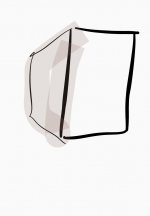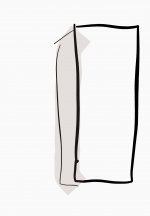Moray, I have some fond memories of Terry myself from a couple of Doc Bottlehead’s VSAC events - sheesh, 2001 & 2003 feel like a lifetime ago. Original BIB with Fostex FE164 powered by George Wright’s 45 SETs (2001) were a revelation as to matching system sensitivity / power to room. Two years later I think he was among the first to demonstrate the full capabilities of high definition server based playback, on BENs powered by Josh Stippich’s Electronluv / Buck Rogers works of art.
vsacdr2
Terry was definitely one of those Reader’s Digest “most unforgettable characters”, and I was blessed to spend a few hours chatting with him at both events, sharing a beverage or two, trying to translate Josh into normal person English, and helping both load out some of their gear. Those all steel bass horn/TL hybrids of Josh’s must have weighed 300lbs, and were not designed to be as easy to carry as the amps.
vsacdr2
Terry was definitely one of those Reader’s Digest “most unforgettable characters”, and I was blessed to spend a few hours chatting with him at both events, sharing a beverage or two, trying to translate Josh into normal person English, and helping both load out some of their gear. Those all steel bass horn/TL hybrids of Josh’s must have weighed 300lbs, and were not designed to be as easy to carry as the amps.
Ok, after more reading, more questions. It appears the better reviews of these Bibs are from the larger drivers. The Audience A3 I am contemplating might be a bit small for this type of enclosure. So I am looking for a 165mm size driver, or so. I do think the Fostex are a solid choice, so probably one of those. I am thinking that not too much Vas will result in a medium size cabinet, which might work in most rooms.
I am still not sure what to make of Qs. Qts is best around .40s-.50s, it is ok if it is lower especially if Qms is a bit higher than normal. Is this correct? Also, If I want a low Qts driver to be higher I can easily add series resistance, then I would just model the enclosure using that higher Qts value? Anyway seems like I will eventually build one of these once I have found a suitable, room/driver, lol.
I am still not sure what to make of Qs. Qts is best around .40s-.50s, it is ok if it is lower especially if Qms is a bit higher than normal. Is this correct? Also, If I want a low Qts driver to be higher I can easily add series resistance, then I would just model the enclosure using that higher Qts value? Anyway seems like I will eventually build one of these once I have found a suitable, room/driver, lol.
Ok, after more reading, more questions. It appears the better reviews of these Bibs are from the larger drivers. The Audience A3 I am contemplating might be a bit small for this type of enclosure.
I am still not sure what to make of Qs. Qts is best around .40s-.50s, it is ok if it is lower especially if Qms is a bit higher than normal. Is this correct? Also, If I want a low Qts driver to be higher I can easily add series resistance, then I would just model the enclosure using that higher Qts value? Anyway seems like I will eventually build one of these once I have found a suitable, room/driver, lol.
Yeah, its super tiny Vas is ideal for a compression driver, so for a BIB it will need a low pass filter to tune it to the pipe horn, i.e. proper BLH or offset the driver further down the pipe [attached].
Pipe horns have a rapid expansion, especially parabolic ones like the BIB, so as I previously posted, it ideally needs a Qes' that yields an upper mass corner = where the driver is rolling off in room, i.e. at the baffle step corner point.
Hmm, in general, low Vas = low Qms, so if higher than normal it means a more powerful motor [lower Qes] than average, so in general, yes; but in general, for a pipe horn we want a weaker motor [higher Qes].
Right, adding series resistance increases Qes [Qes'] per the calculator link I posted earlier.
GM
Attachments
FF165wk.
+1, though really needs a corner if wanting > 'flea' [< 1 W] power handling.
GM
Thanks, yes I would be willing to still try the A3 as an inverted floor loader. If I move the driver z position up the pipe, closer to its .40 z position, could that work? Also, If I adjust its qts using the calculator you linked to the mid .40s using series resistance? I would then use that mid .40 value to calculate Vb? That could provide a decent, though still small inverted Bib.
As far as Fostex I am partial to the 166es-r, If I can find some.
Thanks!
As far as Fostex I am partial to the 166es-r, If I can find some.
Thanks!
Last edited:
You're welcome!
Yes, though the full height BIB [based on 8 ft ceilings] I posted is already at the L*0.424 offset driver position for inverted with side/rear panel terminus cutout, which is high enough from the floor based on a ~38" seated ear height to offset the driver's rising on axis response if not seated too close, otherwise will need either some driver tilting via a sloped supra-baffle or changing total pipe length.
Correct.
GM
Yes, though the full height BIB [based on 8 ft ceilings] I posted is already at the L*0.424 offset driver position for inverted with side/rear panel terminus cutout
Correct.
GM
Last edited:
Hi GM,
You mentioned somewhere else in this forum that it may be a good idea to put Radio Shack 40-1297 in a BIB enclosure. I would like to build a floor loading one. Since 40-1297's fs is fairly high, I wonder what things I can change to make it work. Or should I try ML-TQWT with this driver that you once tried before.
Thanks in advance for your help!
You mentioned somewhere else in this forum that it may be a good idea to put Radio Shack 40-1297 in a BIB enclosure. I would like to build a floor loading one. Since 40-1297's fs is fairly high, I wonder what things I can change to make it work. Or should I try ML-TQWT with this driver that you once tried before.
Thanks in advance for your help!
Last edited:
Greets!
Don't recall nor could find anything in a forum 'post' search, just this from me and Greg B's response: Boss 6 x 9 for open baffle
That said, with a 2*110 Hz/1.01 Qts = ~218 Hz upper mass corner makes it near enough ideal for an average size room: Steven Brown?s DIY audio site
All that said, at this late date its specs are likely pretty far off, though in theory will still somewhat work while being broke back in using pink noise or low B pipe organ CD maxing out the suspension, so for the latter will ideally need to use EQ to ramp up beginning at ~ 500 Hz to max out at > ~ 16 kHz to compensate/loosen up the diaphragm's TL, breakup modes BW.
GM
Don't recall nor could find anything in a forum 'post' search, just this from me and Greg B's response: Boss 6 x 9 for open baffle
That said, with a 2*110 Hz/1.01 Qts = ~218 Hz upper mass corner makes it near enough ideal for an average size room: Steven Brown?s DIY audio site
All that said, at this late date its specs are likely pretty far off, though in theory will still somewhat work while being broke back in using pink noise or low B pipe organ CD maxing out the suspension, so for the latter will ideally need to use EQ to ramp up beginning at ~ 500 Hz to max out at > ~ 16 kHz to compensate/loosen up the diaphragm's TL, breakup modes BW.
GM
My preferred driver height is close to half way between floor and ceiling (all concrete). I get a broad dip where you would expect floor bounce and ceiling bounce. When doing response measurements, I manage to significantly reduce the floor bounce with a stack of pillows up against the loudspeaker cabinet.
Looking back at older response measurements of earlier designs, I see that sub-sat designs with a low-placed bass driver didn't have it, and fullrange drivers at ear-height did. Bass impulse seems to be the big difference between the two styles.
So I'm planning to make sort of a thick grill filled with damping material and see if I can fix the floor/ceiling bounce that way. And get more impulse/dynamics with my current speakers.
Attached are two sketches, a top view and side view. The grey area is the thick grill with damping material.
Some time in the coming weeks I will try out such a baffle. I will show results.
Looking back at older response measurements of earlier designs, I see that sub-sat designs with a low-placed bass driver didn't have it, and fullrange drivers at ear-height did. Bass impulse seems to be the big difference between the two styles.
So I'm planning to make sort of a thick grill filled with damping material and see if I can fix the floor/ceiling bounce that way. And get more impulse/dynamics with my current speakers.
Attached are two sketches, a top view and side view. The grey area is the thick grill with damping material.
Some time in the coming weeks I will try out such a baffle. I will show results.
Attachments
Sorry. What does "diaphragm's TL" mean?
Cone/dome drivers have different modes of transmitting signals depending on the frequency, so once the WLs become < the voice coil's [VC] diameter it moves from pistonic to transmission line [TL], radiating out across in/on the diaphragm's surface and once they are short enough to be damped or reflected back by the surround it transitions to its breakup modes bandwidth [BW].
Whizzers attached to the VC rely on bell modes to add 'fullness' to the driver's mids and dust caps can be everything from a VC damper to a HF ring radiator depending on design, material, etc..
GM
FF165wk. Also look at the Mark Audio Alpair 10.3/10p
dave
Dave, Thanks. I looked at those Alpair 10s, very interesting how those calculate. Love those high xmax! Also liked that Fostex. Another Driver that looks good is the EMS LB6 and for something expensive EMS LB6EX.
The LB6EX field coils go a bit deep, might interfere with the internal baffle. As far as Sd is concerned, keeping it the same, does it matter that much in Bib theory to change W x D?
I meant Sm(terminus area) not Sd
The SS is set up to ensure a fairly constant expansion through the bend, so as this aspect ratio changes, so goes the total axial length and increased reflections back to the throat, but since there should be damping in the area where the driver is it's probably moot until the aspect ratio gets high enough to add a dip in the response at its design upper mass corner [Fhm].
No clue how to calculate this short of using MJK's software, AkAbak or similar 3D calculator, though guessing it's around the 9:1 of a heat/AC duct or similar.
GM
- Home
- Loudspeakers
- Full Range
- Terry Cain's BIB -why does it work and does anyone have those Fostex Craft Handbooks?

